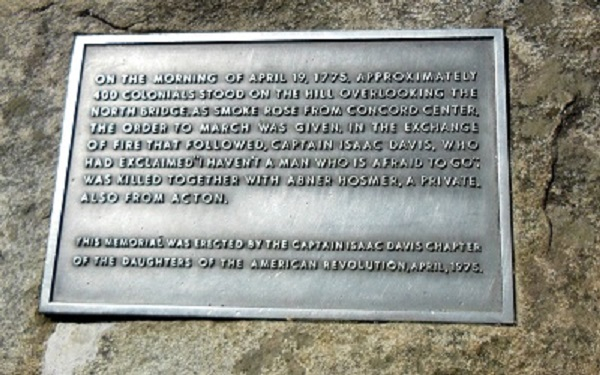

With the outbreak of the American Revolution, the American colonies formally broke ties with the British Empire. This led to the formation of the United States of America. The political upheaval which rose with the revolution was significant, as it was the first time that the colonies rejected the British Parliament and its form of rule to continue in America officially.
Scholars consider the America Revolution as the culmination of independence. The Revolutionary Wars had not just political, but also, economic, social, and intellectual actors playing a crucial part in denying the existing European society to prevail in the Americas and instead, promulgated a new alternative, republicanism, which eventually contributed to the system of America rooted in Liberalism.
The American Revolution was the momentous political and military struggle between the thirteen British North American colonies and colonial Britain. It broke out in 1775, however, historians demarcate the timeline of the American revolution from 1765 to 1783. It is regarded as the first successful struggle for freedom, as well as, the first successful democratic movement, in modern history.
Historians argue on the nature of the American Revolution primarily under five schools of historiography:
Whig School − Spearheaded by George Bancroft, who saw two pillars of the revolution-religion and freedom.
Progressive School − The antithesis of the Whig school of thought. Historians like Merill Jensen emphasized the role of economics in the revolution
Conservative School − Led by Robert Brown, who dispel the Progressives’ argument on class conflict.
Neo-Whig School − Bernard Bailyn was the leading theorist who denied the feature of ‘hero worship’ and saw the American Revolution as a natural tendency of nature.
The American Revolution began on April 19, 1775. However, this was preceded by a long decade of unrest. The Revolutionary Wars began with the Battles of Lexington and Concord. At Lexington, 77 local minutemen faced a large British force of 700; and at Concord, the American counterforce totalled up to 320 to 400. The war began with the ‘shot heard around the world’.

Plaque honouring the minuteman who served in the major battle of the American Revolution
Description-Minutemen were a small hand-picked elite force which was required to be highly mobile and able to assemble quickly. Minutemen were selected from militia muster rolls by their commanding officers.
Historians trace the roots of the American Revolution to the year 1763. It was when the British colonial leaders in the Americas began to assert their imperial reins. The relations between the thirteen colonies of America and Britain began to be tainted, and soon conflicts arose between the two. By 1776, the colonies declare independence officially.
The acts levied by the British parliament, as well as the British navigation act, played a crucial role. The purpose of these acts was to raise funds for the French and Indian War debt.
For example, the Staples Act (1663), Molasses Act (1733), Sugar Act (1776), Stamp Act (1765), and Townshend Acts (1767).
The imposition of the Townshend duties resulted in the infamous Boston massacre (1770) which became the most significant cause of the American revolution.
The Boston Tea Party, an act which overtly displayed anger and resistance against the British, took place in 1773. The colonists poured about 342 chests of British tea into the sea at Boston Harbour
The British Crown took action against the rebellion of the colonists and passed the Intolerable Acts (1774) which further resulted in them losing support.
This was followed by the famous speech of King George III at the Parliament, declaring the American colonies in a state of rebellion.
With the advancement of these events, war became inevitable. The First Continental Congress was formed in Philadelphia in 1774, calling for the creation of the ‘American Grand Council’.
Independence of America
The westward expansion
Formation of a new government
Creation of the U.S. Constitution (implemented n 1789)
Declaration of independence (however, it did not include women, native Indians, and blacks)
End of mercantilism and beginning of free trade in the American colonies
The effects and outcomes of the American Revolution were not so simple. Colonies were no longer burdened with taxation by the British. However, the maritime conflicts were not over as the British seized American vessels and performed forced impressment. Secondly, the westward expansion was accompanied by the Indian removal act and eventually led to the famous ‘Trail of tears’. Next, the economy of the United States was under strain with the national and state governments in debt.
Further, the impact on Britain was severe considering the economic losses incurred while fighting the American Revolutionary Wars and the bigger loss of the economic profits from the American colonies.
The American Revolutionary War is a pivotal event in the history of America. The American Revolution is significant not just because it led to the founding of the United States, but also because it influenced several other countries that fought for liberty and the pursuit of happiness. Historians see the event as an encouragement to stand against colonialism and oppressive government.
Q1. When did the American Revolution end?
Ans. The American Revolution ended in 1782 with the last major battle at Yorktown, where American and French forces defeated the British forces. However, it formally ended on September 3, 1783, followed by the signing of the Treaty of Paris.
Q2. How long did the American Revolution last?
Ans. The war lasted for 7 years. If we take the signing of the Treaty of Paris as the formal end of the war, then records suggest that it lasted for 8 years and 4 months.
Q3. What were the 3 major battles of the American Revolution?
Ans. The Battles of Lexington and Concord (April 1775), which were the first major battles of the war; the Battles of Fort Ticonderoga (May 1775); and the Battle of Bunker hill, Ma (June 1775) were the three major battles of the American revolution.